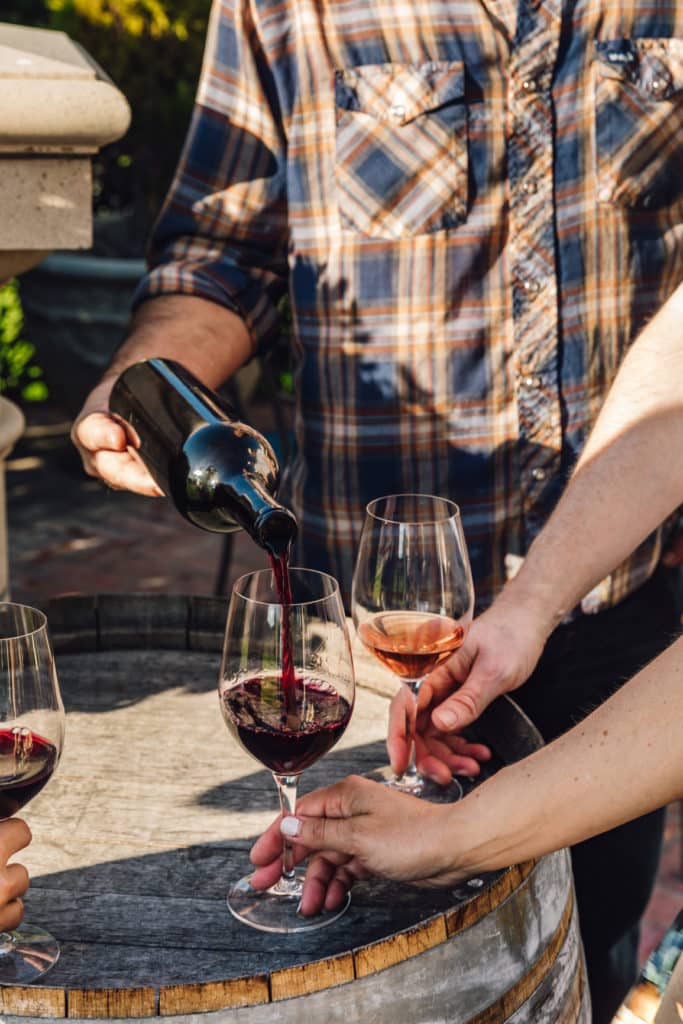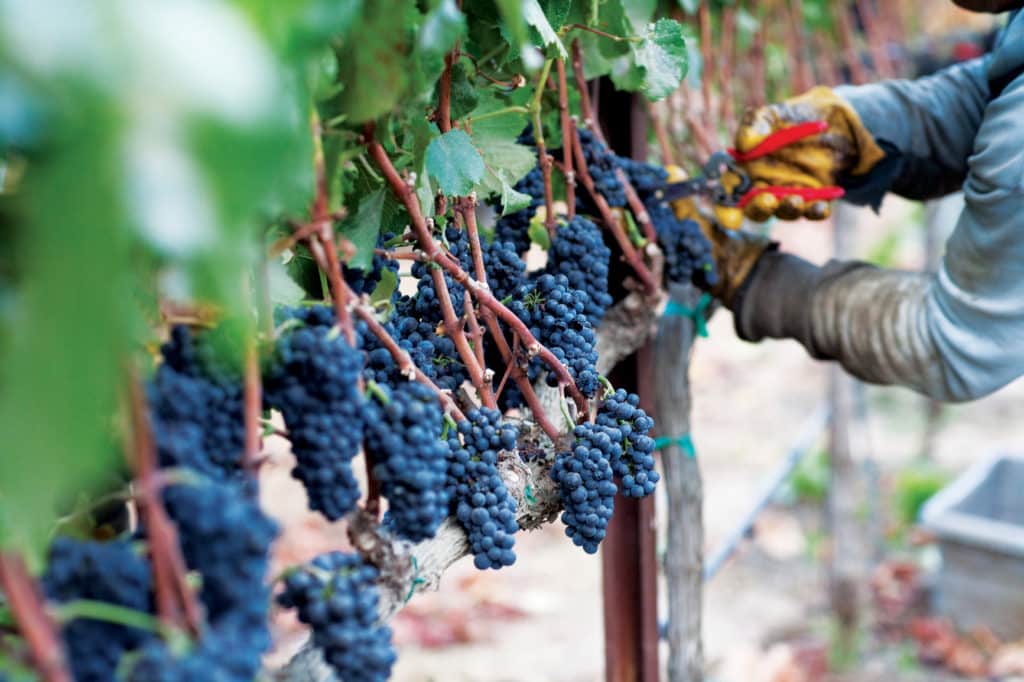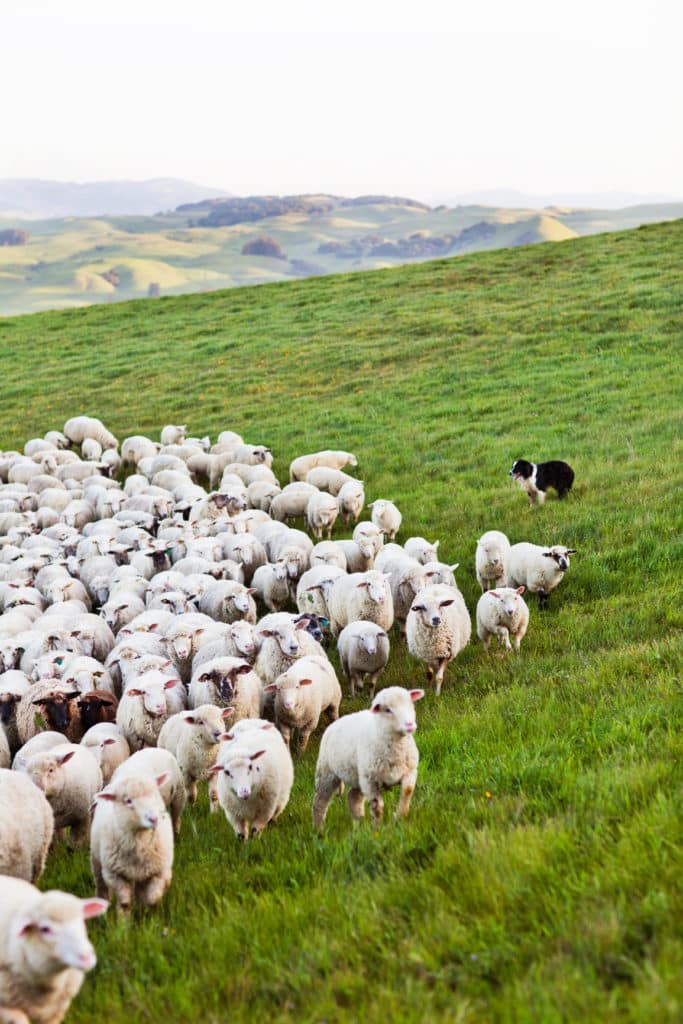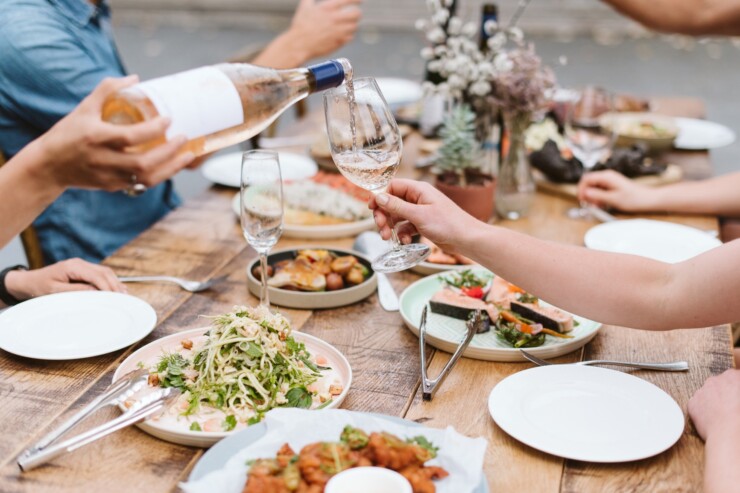Do you have questions about sustainable wine? I’m not surprised. There comes a moment in every wine lover’s life when they’ve been to enough tastings, uncorked enough bottles, and sipped enough bubbly that they start to ask questions.
They could be as straightforward as “Wait, how do you properly hold a wine glass?” as common as “So what’s the best way to learn to describe what I’m tasting?” or as complicated as “How do I read a wine label?”
If you’re wondering, the answer is to hold the stem, not the bowl! Practice smelling and tasting lots and lots! And, well, it depends on where the wine is from. As for sustainable wine, we’ll dive deep into that right here.

What Is Certified Sustainable Wine?
The most common question for those making a concerted effort to go “green” is how sustainable wine is defined. This question leads to more questions, and we’ll explore it here.
California Wine Month marks the Golden State’s harvest height each September. Since we produce over 80% of the nation’s wine and are the world’s fourth-largest wine producer, it seems appropriate to explore this question.
As a California-based WSET Level 2 certified wine expert who has studied wine since college, I’ve tackled sustainable wine many times. And now, as a travel planner who curates itineraries to California, I have been lucky enough to visit wineries and taste wines in all the state’s major wine-growing regions.

Defining Organic, Biodynamic, and Sustainable Wines
The place to start when defining sustainable wine is with another question. Namely, “What is the difference between organic, biodynamic, and sustainable wine?”
We could fill a book with the nuanced regulations surrounding these terms worldwide, but let’s start with what they mean here in California.
Organic Wine
Of the three terms, “organic” is the most defined because it’s government-regulated. In the United States, for a wine to be called “organic,” it must adhere to the standards of the USDA’s National Organic Program, which aims to protect natural resources and promote biodiversity.
There are two main types of organic wine. The first is a wine “made with organic grapes,” meaning that all grape growing and farming practices, such as viticulture, follow organic standards.
Then you have wines labeled “USDA organic,” which means the wine follows organic practices in viticulture and the viniculture (or in the winemaking) process.
Translation: a wine labeled “USDA organic” has been made with 100% organically grown grapes and does not have added sulfites. The downside is that the absence of sulfites (a natural preservative) means the wine won’t have a long shelf life. Here in California, a farm can get certified CCOF or a California Certified Organic Farm if desired.

Biodynamic Wine
I first encountered biodynamic farming practices when I lived in Europe and befriended many Loire Valley producers who pioneered the wine world.
Still today, most biodynamic wines are produced in Europe, which is fitting since the Austrian philosopher Rudolf Steiner created biodynamics a century ago.
Biodynamics is an alternative form of agriculture beyond organic because it accounts for the entire growing ecosystem. It considers the viticulture and viniculture process and accounts for nature’s elements and the lunar phases.
Think of biodynamics as organics with added spirituality. If organics were your fit marathoner friend and sustainability were your friend who lives a holistically green life, biodynamics would be your crystal-wielding, good bathing yogi friend.
Like organic wines, biodynamic wines are usually made without sulfites and, therefore, limited in their ability to age. While the definition of organic changes from country to country, biodynamics stays the same worldwide. Most producers who are committed to biodynamics will get Demeter certified.

Natural Wine
Before discussing sustainable wine, allow us to detour for a hot second to address the newer kid on the block: natural wine.
This term is not legally regulated, but it’s often used to mean that the wine is low-intervention. In other words, the wines undergo spontaneous fermentation with native yeast, are minimally manipulated, have trace amounts of sulfates, and usually are not filtered or fined. Often, this means that natural wines can have a shorter shelf life and are thus intended to be drunk young.
If the winemaker adheres to those respective strategies, natural wine can be certified organic, biodynamic, or even sustainable.
Sustainable Wine
Here in California, sustainability has been part of the conversation for decades. We’re all about it because sustainable winegrowing practices account for the entire ecosystem and aim to protect t protect the whole earth, including the soil, air, and water.
So sustainability accounts for the grape growing and winemaking process and incorporates various practices that help the winery make economically viable and socially responsible decisions.
Note that a sustainable wine is probably not made with 100% organically grown ingredients unless otherwise indicated. However, a sustainable wine can be natural, biodynamic, or organic, so look at the label to learn more.
The eight key areas wineries focus on in their sustainability practices in California are: water efficiency, energy efficiency, pest management, soil health, waste management, wildlife habitat, community contributions, and the supply chain. Examples of this include:
- Water Conservation: Opting for drip irrigation or even dry farming
- Energy Use: Harvesting at night so grapes (and vineyard workers) stay cooler
- Pest Management: Using beneficial insects and birds of prey (like falcons!) to help manage insects and rodents
- Green Building: Opting for reclaimed or recycled construction materials
- Land Conservancy: Leaving part of a winery’s property undeveloped to provide a wildlife habitat
- Quality Of Life: Committing long-term to the health of their communities
Visit the California Wine Institute’s section on sustainable winemaking to learn more about how California’s wineries embrace sustainability and the various certification programs.

How To Shop For Sustainable Wine
There are multiple certifications for sustainable wine, and each has a slightly different emphasis. However, the majority are self-assessed and are routinely audited by an independent third party.
One of the most revered certifications here in California is the Certified California Sustainable Winegrowing certification which is administered by the California Sustainable Winegrowing Alliance (CSWA). When shopping, you can look for that label to know that the winery you’re purchasing from has embraced a sustainable mindset.
The bottom line is that wines with a sustainability certification mean the winery is trying to tell you they keep the environment, social responsibility, economic viability, and quality in mind. Remember that the wine label is your friend because it’s the winery’s way to help you find the wine that suits your lifestyle!
Now that you’ve understood the different terms and what they mean, you can hunt down the best wine. Let us know below the wine you love now and how you plan to celebrate California Wine Month!
Frequently Asked Questions
Sustainable wine refers to wine produced through environmentally responsible, socially beneficial, and economically viable practices. Unlike organic wine, which strictly prohibits synthetic pesticides and fertilizers, sustainable winemaking focuses on a broader approach, including water conservation, energy efficiency, reducing carbon footprint, and enhancing biodiversity.
Biodynamic wine treats the vineyard as a single ecosystem and employs astrological sowing and planting calendars. Sustainable winemaking can incorporate organic and biodynamic practices but emphasizes overall sustainability over specific cultivation methods.
Consumers can identify sustainably produced wine by looking for certification labels on the wine bottle. Various organizations worldwide offer sustainable wine certifications, such as Sustainability in Practice (SIP) Certified or Certified California Sustainable Winegrowing (CCSW).
These labels indicate that the winery has met specific sustainability standards in its production process. It's also helpful to research wineries' practices, as many provide detailed information about their sustainability efforts on their websites.
Choosing sustainable wine benefits the environment by promoting practices that reduce chemical use, conserve water, and protect wildlife habitats. It also supports wineries that invest in their communities and workers' well-being.
For consumers, sustainable wines often reflect high-quality winemaking practices that can result in superior taste and purity due to the emphasis on maintaining a healthy vineyard ecosystem.

Food And Wine Pairing Tips
Since you’re racking up the knowledge on sustainable wine, you’re likely wondering how to pair it with all that great food. Check out our top food and wine pairing tips, including how to match hard-to-pair ingredients like artichoke, avocado, and asparagus.
Have Us Plan Your California Wine Country Trip
Did you know we’re also a boutique travel agency specializing in California vacation planning? If you’re planning a trip to California wine country, our California trip planner services can help you plan your perfect itinerary.
Photo Credit: Opening photo of wine pouring by Jayme Burrows; photos of grapes being picked and sheep on the hill by Sara Remington
2 thoughts on “What Is Sustainable Wine And Why Care About It”
I love sustainable wine! I’m always looking for ways to reduce my environmental impact, and sustainable wine is a great way to do that.
I found this post to be incredibly informative and eye-opening. As a wine enthusiast, I had no idea the impact that the winemaking process can have on the environment. I’m excited to learn more about sustainable wine practices and support winemakers who prioritize the health of our planet. Thank you for sharing this important information!